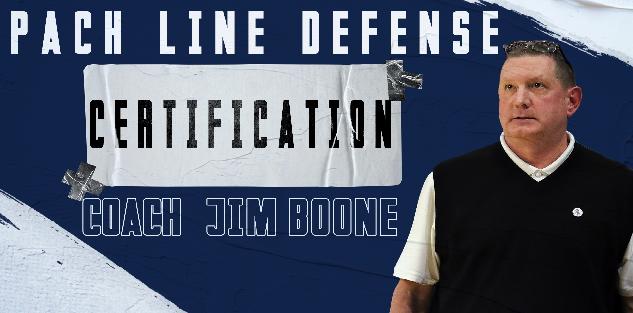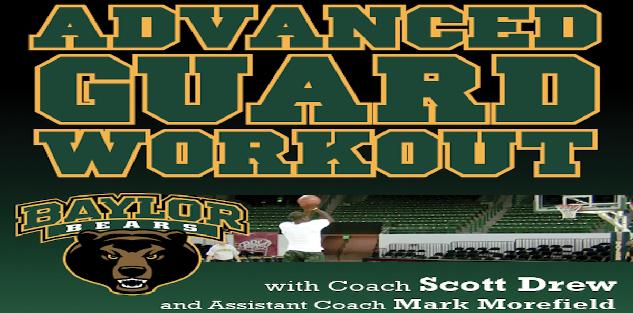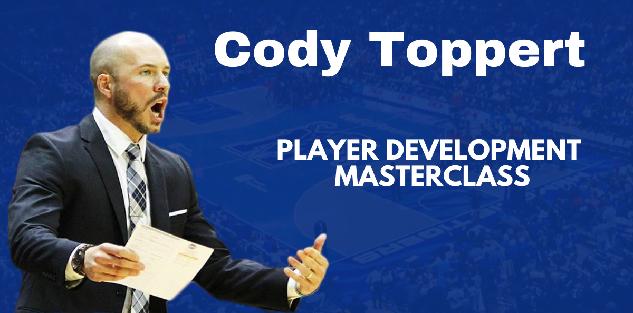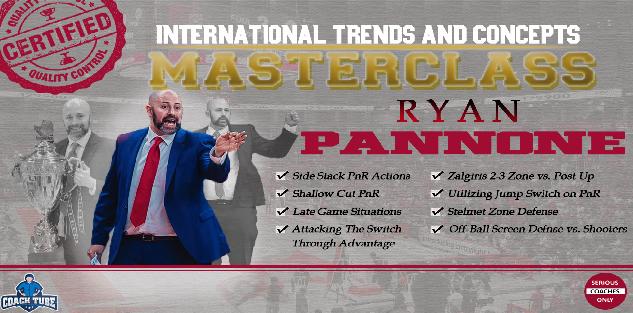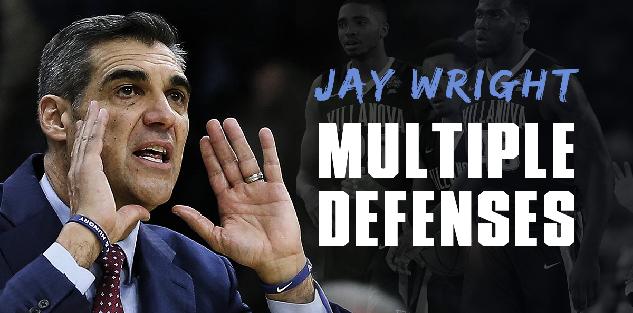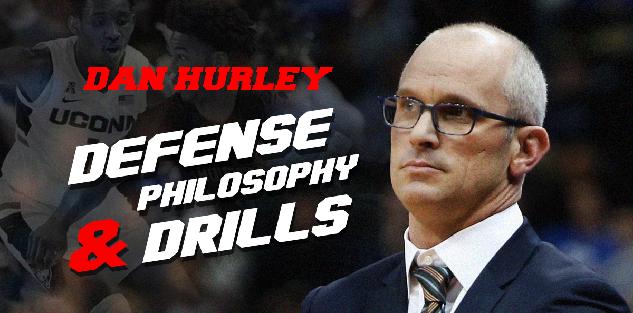Featured courses
- Two Great Game Situational Workouts For the Basketball Offseason by Grant Young
- Two Reads Basketball Players Must Understand Before Executing the Ball-Screen by Grant Young
- Two of LSU Coach Kim Mulkey’s Game-Winning Inbounds Plays by Grant Young
- Three Effective Early-Season Defensive Basketball Drills by Grant Young
- Four Essential Tips For Basketball’s 1-3-1 Zone Defense by Grant Young
- Four Zone Defense Drills to Strengthen Your Team by Grant Young
- How to Beat the Three Most Common Pick and Roll Coverages by Grant Young
- Two Drills to Improve Shooting at the Start of the Basketball Season by Grant Young
- Core Basketball Principles That Dallas Mavericks Coach Sean Sweeney Teaches by Grant Young
- Three Competitive Shooting Drills For Your Basketball Team by Grant Young
- How To Teach The ‘I’ Generation of Basketball Players by Grant Young
- Three Elite Drills to Begin a Basketball Practice With by Grant Young
- How to Build a Championship-Winning Basketball Team Culture by Grant Young
- Two of Texas Women’s Basketball Coach Vic Schaefer’s Tips For Team Culture by Grant Young
- Atlanta Dream WNBA Coach Brandi Poole’s Four Sets for Secondary Offense by Grant Young
- NC State Basketball Coach Brett Nelson’s 4 Crucial Point Guard Qualities by Grant Young
- Kentucky Coach Mark Pope’s Five Guard Rules For Offense by Grant Young
- McNeese State Basketball Coach Will Wade’s 4 Core Pillars by Grant Young
- 4 Tips To Instantly Improve Your Free Throw Shooting by Tyler Linderman
- Assemble a Championship-Caliber Basketball Rotation by Brandon Ogle
- Two of UConn Coach Dan Hurley’s Key Defensive Drills by Grant Young
- Four Post Moves All Basketball Forwards Should Have In Their Bag by Grant Young
- Four of Baylor Coach Nicki Collen’s Midseason Pick and Roll Adjustments by Grant Young
- WNBA Legend Sue Bird’s Two Tips For Attacking on Offense by Grant Young
- Houston Coach Kelvin Sampson’s Three Keys for Building a Basketball Program by Grant Young
- Two of Tom Izzo’s Top Michigan State Defensive Drills by Grant Young
- Four of Olympic Gold Medalist Coach Mechelle Freeman’s Relay Race Strategies by Grant Young
- Three Key Strategies Will Wade Uses to Build a Dominant Team by William Markey
- Five UConn Huskies Men’s Basketball Plays That You Can Use by Grant Young
- Three Tips for Maintaining Team Culture at the End of a Basketball Season by Grant Young
- Three Dribble Drive Motion Drills to Teach Your Basketball Team by Grant Young
- Three Dribbling Drills For Non-Primary Ball Handlers by Grant Young
- Four Advanced Ball Handling Drills For Basketball Guards by Grant Young
- Three Tips to Sharpen Your Post Player’s Footwork in Basketball by Grant Young
- These Three Pick and Roll Drills Are Crucial For Any Ball Screen Offense by Grant Young
- Three Closeout Drills to Improve Basketball Shooting Defense by Grant Young
- Three Tips to Perfect the Packline Defense in Basketball by Grant Young
- Four Keys to Executing the Read and React Offense in Basketball by Grant Young
- Three Tips to Develop Elite Basketball Shooters by Grant Young
- Three Crucial Keys to Executing the 5 Out Offense in Basketball by Grant Young
- These Three Offensive Sets Will Help You Beat Any Zone Defense by Grant Young
- Three Transition Basketball Drills To Play With More Pace by Grant Young
- Three 5 Out Offense Drills Any Basketball Coach Can Use by Grant Young
- Four Vital Techniques for a Motion Offense in Basketball by Grant Young
- Three Baseline Inbounds Plays To Win Your Basketball Team Games by Grant Young
- Four Drills For Sharpening the European Ball Screen Offense by Grant Young
- Three Positioning Tricks For a Basketball Zone Offense by Grant Young
- Three Rules to Perfecting Basketball's Lock Left Defensive System by Grant Young
- UCLA WBB Coach Cori Close’s Two Keys to Winning the Mental Game by Grant Young
- Four of Alabama Coach Nate Oats’ Favorite Basketball Drills by Grant Young
- Three Ways To Turn Transition Offense in Basketball Into Points by Grant Young
- Three Drills to Master Basketball's Pack Line Defense by Grant Young
- Three Transition Defense Drills to Halt Fast Breaks by Grant Young
- Four Offensive Rebounding Drills to Win Second Possessions by Grant Young
- 4 Defensive Technique Drills from Boston Celtics Assistant Coach Brandon Bailey by Marek Hulva
- 5 Drills to Improve Ball Handling by Tyler Linderman
- 13 FUNNY BASKETBALL GIFS by Alex
- BASKETBALL SPEED AND AGILITY: 8 QUESTIONS FOR COACHTUBE EXPERT RICH STONER by Jaycob Ammerman
- Defensive Strategies for Basketball by Ryan Brennan
- 4 Keys To Turning Your Program Into Championship Contender By Dallas Mavericks Coach Sean Sweeney by Marek Hulva
- 5 Components to Creating a Winning Basketball Program by Justin Tran
- Guide to Becoming a Lethal Scorer in Basketball by Justin Tran
- Zone Defense In the NBA Eastern Conference Finals by James Locke
- Mastering Court Mobility: Tips for Effective Movement in Basketball by Justin Tran
- 5 Basketball Shooting Drills: How to Develop a Sharpshooter by James Locke
- 6 Points of Emphasis for a Successful 5 Out Offense by Jaycob Ammerman
- Effective and Efficient Methods to Practice During the Basketball Season by Justin Tran
- Three Great Passing Drills From a Basketball Coaching Legend by Grant Young
- 7 Principles For Perfecting the Princeton Offense in Basketball by Grant Young
- How to Replicate A Modern NBA Offense by Grant Young
- Three Great Two-Ball Dribbling Drills For Basketball Development by Grant Young
- Two Rebounding Drills to Win Your Basketball Team Championships by Grant Young
- How to Improve Your Basketball Team’s Defense With the Shell Drill by Grant Young
- How Baylor Basketball’s Scott Drew Develops Elite Guard Play by Grant Young
- Off-Ball Movement Tips and Strategies: Lessons From the NBA Finals by James Locke
- Player Development: Scott Drew’s Tips for Producing NBA Guards by James Locke
- How to Execute a Spread Offense in Basketball by Grant Young
- Four Quality Quotes From Four Final Four Coaches by Grant Young
- A Guide to the Pack Line Defense by Alex Martinez
- 3 Defensive Build Up Drills to Improve Team Basketball Defense by Grant Young
- Battle of Two Great Coaches: Best Plays from the NBA Finals Contenders by Justin Tran
- 10 Creative Ways Athletic Programs Can Use a Video Board to Raise Money by Coach Williams
- How to Use 3 on 3 to Improve Your Basketball Team by Grant Young
- How to Defend the Pick and Roll by Grant Young
- Mastering Basketball Defense: Techniques, Drills, and Strategies for Success by Justin Tran
- Three Tips From The Coach Who Developed Giannis Antetokoumnpo by Grant Young
- 2023 NBA Draft: Skills and Technique from Top Prospects by Justin Tran
- From College to the Pros: Transitioning the Dribble Drive Offense by Justin Tran
- Positionless Basketball: Redefining Roles on the Court by Justin Tran
- Revolutionize Your Offense: Proven Concepts to Elevate Your Basketball Game by Justin Tran
- 5 Essential Fastbreak Drills Every Basketball Coach Should Know by James Locke
- How to Run a Circle Offense in Basketball by Grant Young
- Game-Changing Strategies: ATO Plays in the EuroLeague and Olympics by Justin Tran
- How to Stand Out at Basketball Tryouts by Grant Young
- How to Improve Your Basketball Team’s Transition Defense by Grant Young
- Indiana Fever GM Lin Dunn’s Two Keys For Women’s Basketball Coaches by Grant Young
- Strength Training Strategies Every Basketball Player Should Have by Grant Young
- A WNBA Basketball Coach’s Four Priorities In Transition Defense by Grant Young
- Three Adjustments to Make When Your Basketball Offense Isn’t Working by Grant Young
- Three Pillars to Applying Defensive Pressure on the Basketball Court by Grant Young
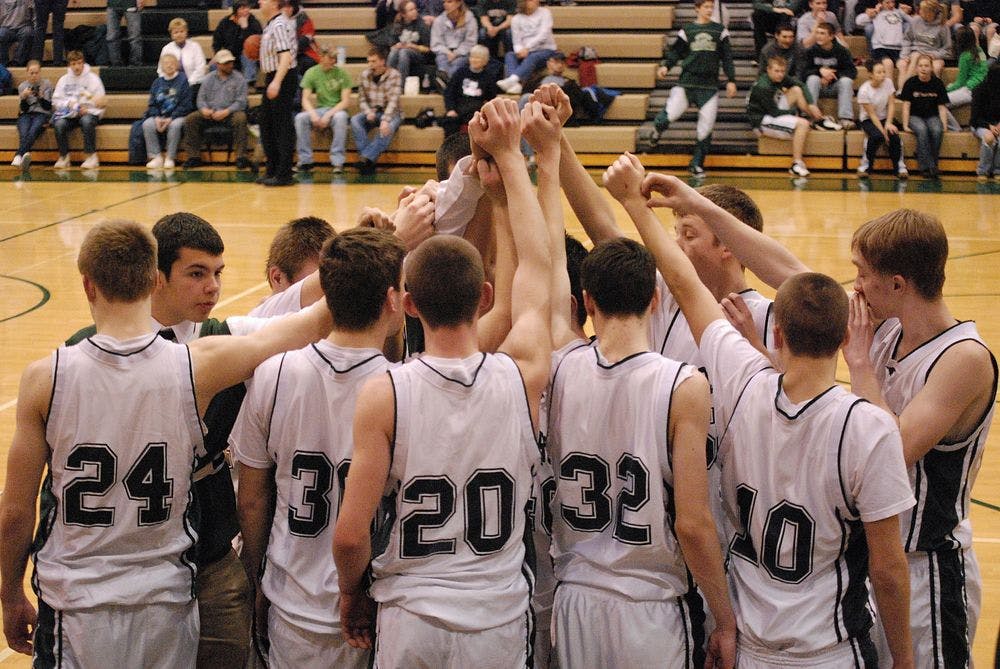
Assemble a Championship-Caliber Basketball Rotation
- By Brandon Ogle
No coach, at least in recent memory, has exemplified the set-up of rotations better than the San Antonio Spurs’ Gregg Popovich. The legendary coach once said, “It’s not about any one person. You’ve got to get over yourself and realize that it takes a group to get this thing done.” Having a star player definitely helps a lot in the campaign towards winning basketball games, but it doesn’t ensure victories. With this said, every player on the roster can provide positive dividends, whether that be at practice pushing the starters or contributing in the games!
Starting Five
Simply put, the starting five are the players that get the lion’s share of the attention. These five players need to constantly be on the same page. Likewise, it is urgent to possess the ability to be quick starters. When you can get ahead early, the rest of the players become more comfortable and you play better. However, I urge all players to not hold the starting five recognition to the utmost importance. Yes, it’s easy to see why all players want to be starters, but the starting five is not always the five most talented players on the roster. Normally, it is just the five players that complement each other the best. So, the best advice I can give is to not get discouraged if you don’t start. Rather, keep your mental fortitude up and play at maximum effort.
Sixth Man
The title “Sixth Man” is typically given to the player that is first off the bench. He or she’s game can fall under a number of different categories, but the key is that the sixth man understands his or her role on the team. As I just mentioned, not all players serving as the sixth man have the same styles of play. Many teams opt to go with dynamite scorers as the sixth man. These players can come in right away and aren’t afraid to take action and put some shots up. Meanwhile, other teams use a three-point marksmen. Here, you’re looking for a player that is deadly from deep and not hesitant to come in with the purpose of cleaning up an early deficit. Conversely, there are coaches that look for a defensive stopper or rebounding specialist. All of these different types of players are above-average in at least one skillset. If you’re working to be a sixth man, take this philosophy to heart. I recommend checking out this video from CoachTube ttp://coachtube.com/course/basketball/dribble-pass-shooting-practice">CoachTube by high school coach, Bob Schurtz, as he breaks down the critical aspects of ball-handling, passing and shooting. Each of these are attributes capable of being perfected by sixth man players. While all of these are different skillsets, the core idea is personality. The sixth man needs a mindset where he understands his job and doesn’t need a couple minutes on the court to start making plays.
Second Unit
Just as every team has a starting five, they also have a second unit. This back-up group of players likely won’t be as talented as the starting five. However, they will have experience practicing as a unit, thus preparing them to play together. While the starting five will usually have specified roles, this will be exactly the case with the second unit. Any players on the second unit need to understand they have limited time to make an impact on the coach. If you’re not getting the job done, then an early hook is a definite possibility.
Stamina
When coaches are evaluating their rotations, they always take into mind the stamina of their team. This concept sort of goes hand-in-hand with the next section, but the key is to not ignore conditioning. Like any sport, you need to be in great shape to play basketball. Even though the coach is largely in charge of ensuring proper conditioning during the season, I urge you to not ignore offseason work. The offseason is where you start seeing the differences between players. Whether it be putting in work in the weight room, getting up shots in the gym or doing cardio, you need to prepare yourself for the season. This will help ensure stamina is an after-thought come regular season time.
8, 9 or 10 Players?
Depending on the roster size, you can see anywhere from 7-10 man rotations. Since 7 is not very wise, I’ll take a deeper look at 8, 9 and 10 player lineups. First off, a 10 player rotation is essentially a coach’s dream. It allows them to give everyone adequate rest and basically, implement a platoon system like the University of Kentucky did during the 2014-15 season. Stamina shouldn’t be a question here, thanks to the large number of quality players. Meanwhile, 9 still ensures stamina shouldn’t be a question. However, it also means there is probably going to be a player or two in the starting lineup that is capable of playing more minutes than the rest. Finally, an 8 player rotation is utilized when you’re a little thin on the bench. This doesn’t mean the team isn’t talented. Instead, it just proves that either the starting five is significantly better and can play longer stretches or there are one or two elite players on the roster.
Garbage Time
No matter what level you’re at, there are going to be games where either your team is up by a lot or you’re getting run out of the gym. In these cases, coaches need players capable of playing the late minutes. If you’re still at the youth level, chances are starters could still be in there late in blowouts. With this said, these situations provide the opportunity to showcase our skills to the coach and develop chemistry with your teammates to ensure you’re successful next time out. In the end, it is important to take advantage of every minute you get on the hardwood and never consider a moment meaningless!
Back-to-Backs
When I hear the term “back-to-backs,” I always think of the San Antonio Spurs and Gregg Popovich. While coaching aging veterans like Manu Ginobili and Tim Duncan, Coach Pop elected to rest these guys as often as possible to ensure they were ready for the postseason. Though this situation largely is in effect for older leagues, it is important to understand how to handle back-to-backs, which are when you have games on consecutive games. While some of this depends on maturity level, you need to develop an understanding of how you can pace yourself in these scenarios. Even if you might be in great shape, it is vital to have complete knowledge of your body and how to prepare yourself to handle these strenuous situations.
Examples of Solid Rotations
It isn’t difficult to find quality rotations. However, it is also important to remember that complete rotations don’t form overnight, as coaches are consistently tinkering with them. For an example, I’ll give the 2013-14 NBA Champion San Antonio Spurs:
- PG: Tony Parker, Patty Mills – At the point guard spot, the Spurs had a quality veteran in Parker, who had loads of playoff experience. As a backup, Mills possessed the ability to come in and have an instant impact, even if that was only 10-15 minutes a game.
- SG: Danny Green, Manu Ginobili, Cory Joseph – Shooting guard was similar to the point guard position, but switched. The veteran, Ginobili, came off the bench, but provided a calming influence on the second unit and even mixed in with the starting five later on in the games. Meanwhile, Danny Green was a deadly outside shooter that was a perfect fit in the starting unit.
- SF: Kawhi Leonard, Marco Belinelli – At small forward, we see a rising star in Leonard and an immediate scoring threat in Belinelli. Leonard also served as the defensive stopper in the starting five. This is important as he was able to face up with the opponent’s top scorer and attempt to shut them down.
- PF: Boris Diaw, Jeff Ayres, Matt Bonner – The starting power forward, Boris Diaw, is a unique player in his ability to space the floor. His versatility opens up the paint for penetration. For backups, Popovich had two options with a rebounding force in Ayres and scoring option in Bonner.
- C: Tim Duncan, Tiago Splitter – Depth is once again witnessed at the center position. Although an aging superstar, Duncan was still able to be effective in his minutes. However, the presence of Splitter allowed Duncan to rest in garbage time and occasional back-to-backs.
Depth!
Every coach loves to have depth on their team. While I’ve mentioned the various aspects of a quality rotation, if you don’t have capable back-ups, it’s going to be hard to put together a great rotation. As witnessed with the Spurs’ championship team, you need quality back-ups that can give the starters a rest. However, these are not guys just in there to give players a breather, but rather players understanding the opportunity at hand of being on the court!

